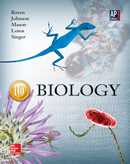1 A) Negative feedback will be decreased, causing faster ATP production. B) The electron transport chain will slow down. C) The cell will have no mechanism to make ATP and will die. D) Phosphorylation of ADP will decrease. E) All of the above will occur. 2 A) 1 B) 2 C) 3 D) 4 E) 5 3 A) Anabolism B) Catabolism C) Regulation D) Negative inhibition E) Anti-phosphorylation 4 2 is produced, but animal cells do not produce CO2 . What is the difference in their fermentation strategies?A) Yeast fermentation creates ethanol. B) Animal cells create ATP and ethanol. C) Animal cells do not undergo fermentation. D) Yeast cells ferment pyruvate to lactic acid. E) There is no difference in their fermentation pathways. 5 A) It does not require oxygen in order to function. B) It occurs in the cytoplasm of cells. C) It is exergonic, and therefore obeys the laws of thermodynamics which are fundamental to chemistry and physics. D) This biochemical pathway has been retained by all living organisms. E) There is no evidence that glycolysis is primitive 6 A) the utilization of oxygen in a cell. B) the oxidation of organic compounds to extract energy from chemical bonds. C) production of ATP in a cell. D) the conversion of the energy of sunlight to chemical energy. E) reduction of NADH to drive chemical reactions in a cell. 7 A) True B) False 8 false ?A) Some ATP is consumed in glycolysis. B) The end product of glycolysis is lactic acid or ethanol. C) Some ATP is created through substrate-level phosphorylation. D) Overall, glycolysis releases energy and is thus termed exergonic . E) All of the above statements are true. 9 A) In the mitochondrion. B) In the electron transport chain. C) In the cytoplasm, just like in prokaryotes. D) Anywhere in the cell, provided pyruvate dehydrogenase is present. E) In ribosomes. 10 A) True B) False 11 A) NADH B) A proton gradient C) FADH2 D) Movement of electrons along the membrane itself E) The activity of NADH dehydrogenase 12 A) Because of the efficiency of chemiosmosis, the result is actually much higher. B) FADH2 actually consumes some ATP. C) The cell membrane is somewhat leaky to electrons. D) The proton gradient can facilitate other tasks besides ATP synthesis. E) You have to add in ATP produced during glycolysis, which has nothing to do with oxidation. 13 A) True B) False 14 A) Deamination B) Depurination C) Dephosphorylation D) Dehydration E) Deoxygenation 15 2 S instead of water as a source of electrons. What would have been released into the environment as photosynthesis occurred?A) Gaseous hydrogen B) Liquid hydrogen C) Water D) HS E) Sulfur





